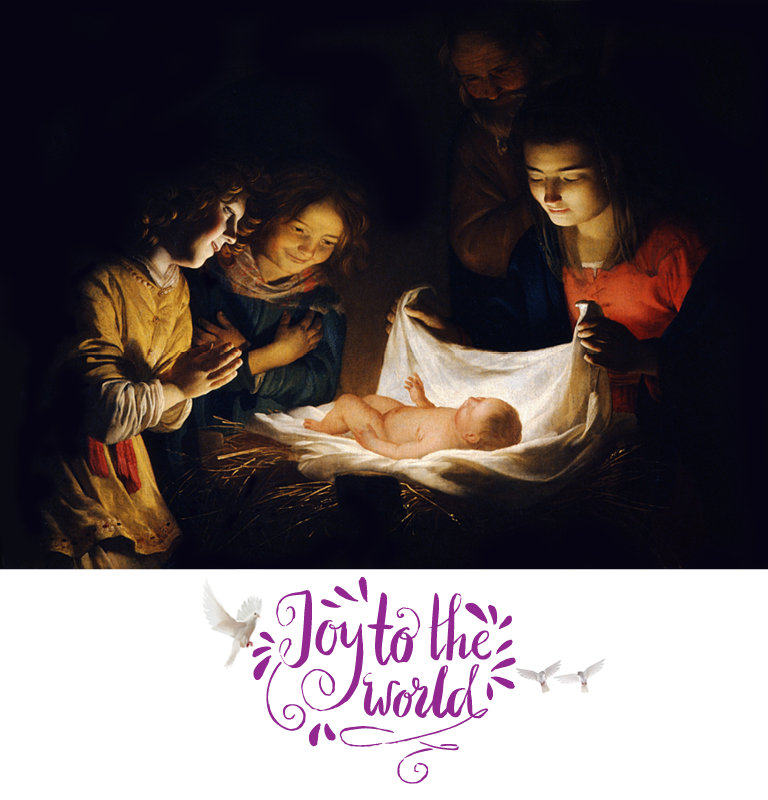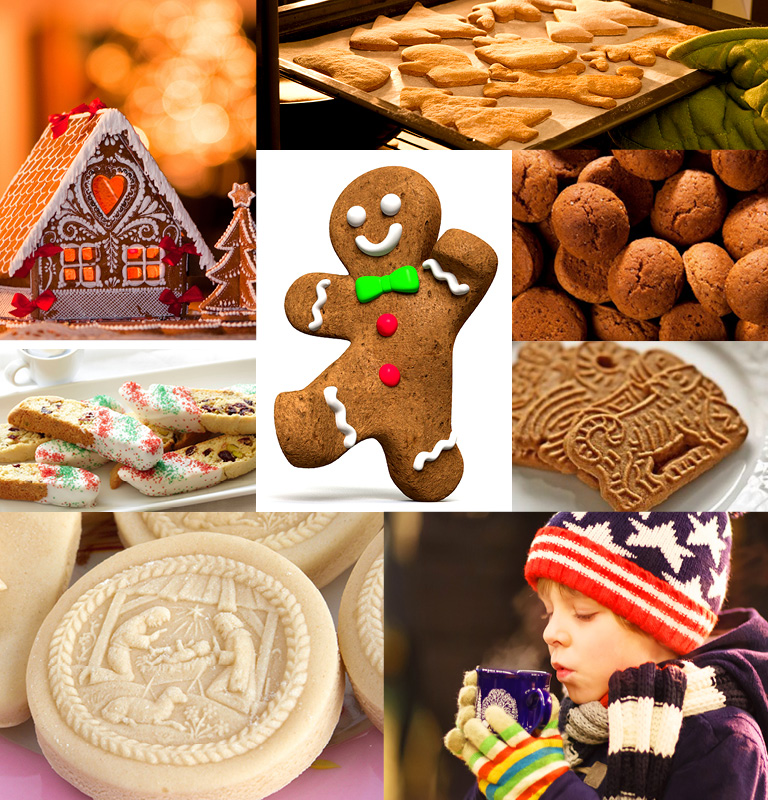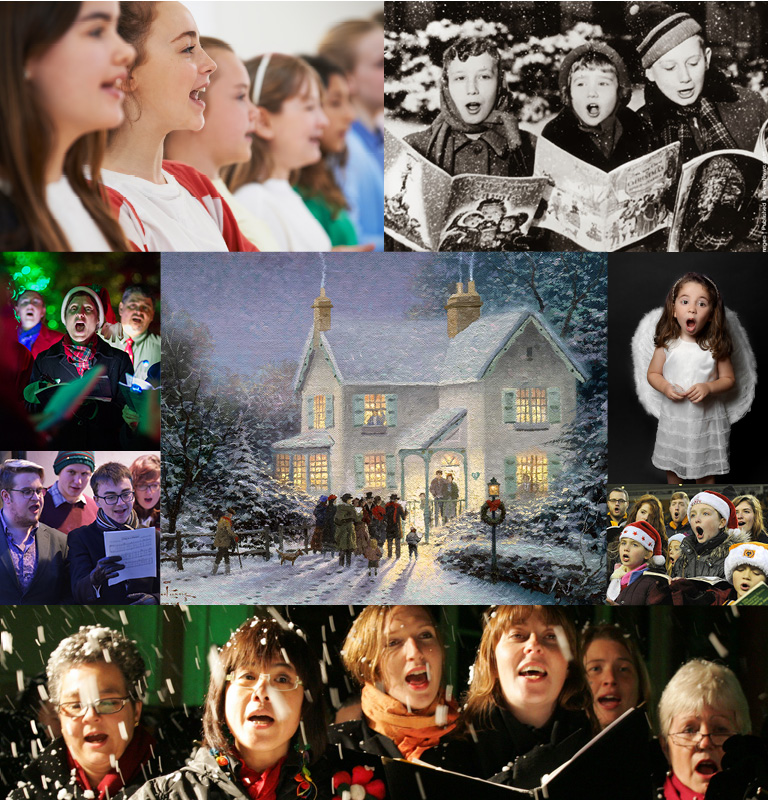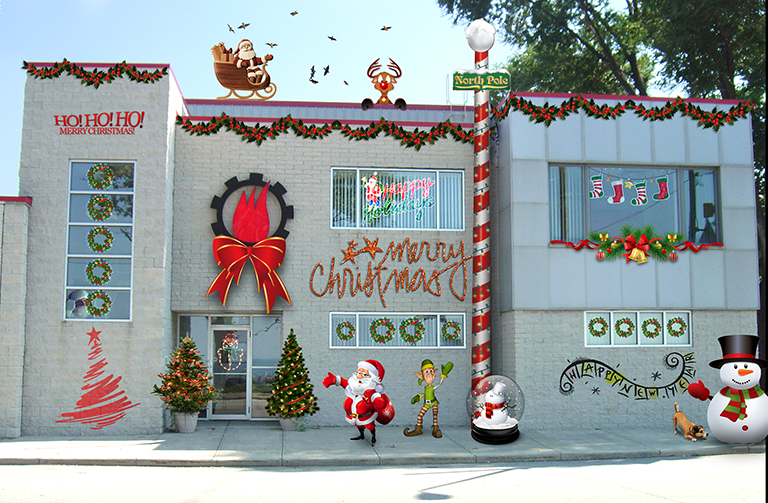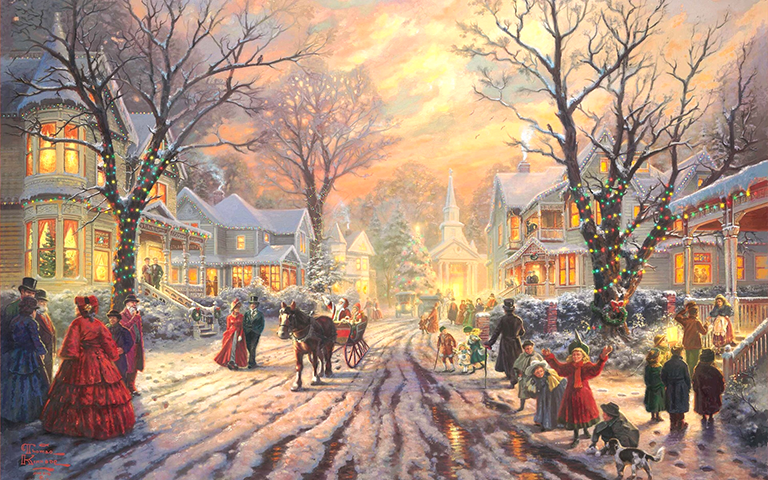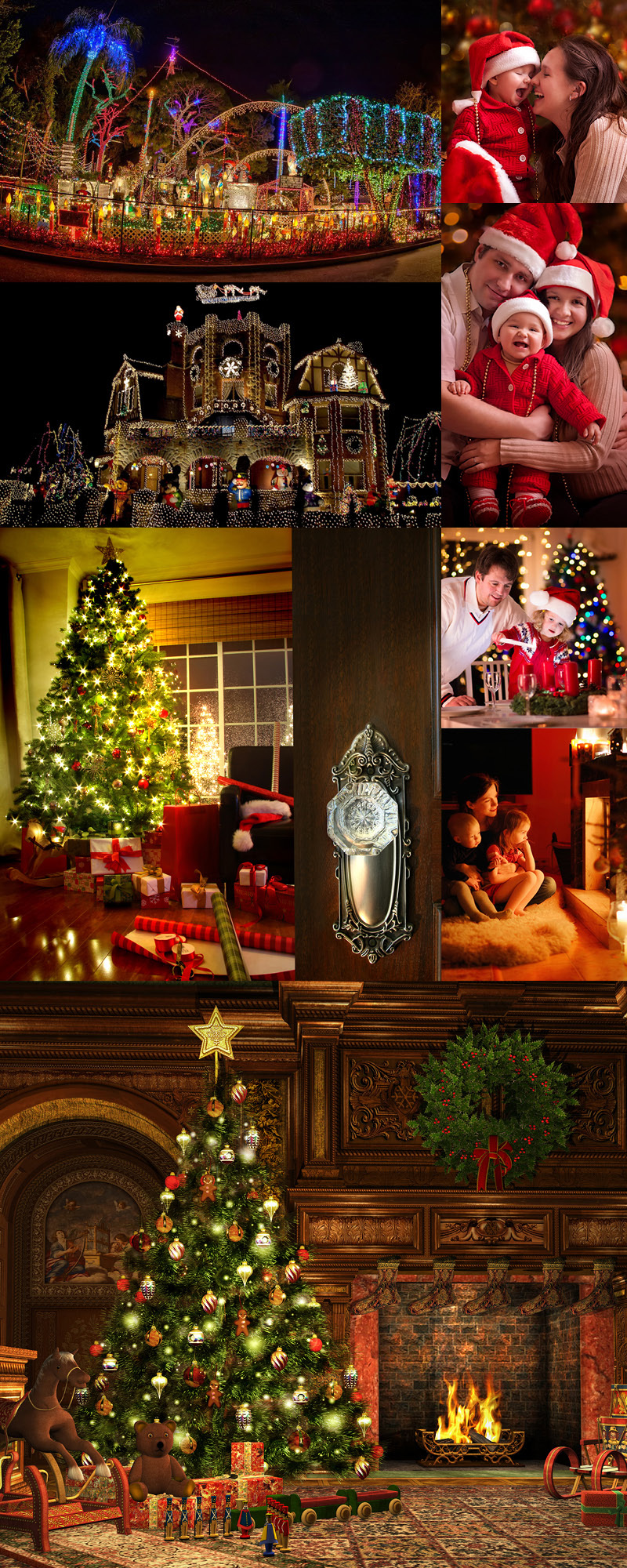 Decorating the house inside and out is so much fun. Sharing in this season gives me a warm feeling, too. (and I do like warm) So whether you go all out or keep it manageable, be sure to enjoy your family, friends and maybe make a donation to folks & organizations who need our help.
Decorating the house inside and out is so much fun. Sharing in this season gives me a warm feeling, too. (and I do like warm) So whether you go all out or keep it manageable, be sure to enjoy your family, friends and maybe make a donation to folks & organizations who need our help.
Around my neighborhood, it starts slowly, sometimes before Thanksgiving. We see decorations and lights pop up at different houses. Of course, the stores have been at it for months, and the need to decorate the house arrives. With us, we always start after December 2nd no exceptions! This is one of my daughter’s birthday – Our tradition is no decorations until after her B’Day.. Before the nasty weather really hits, I like to take my cue from Jackie, who sets aside some time, usually on the weekend, and asks ( innocently of course!) if I am going to get down the boxes and plan our decorating. (Subtle!) Like you, I struggle untangling the lights in the garage, spreading them all over the floor, trying to see which strings of lights made it through to the next season. In years gone by I would climb onto the garage roof, hang off the side and run the lights. For whatever reason, I am no longer allowed to do that! Once safely done on the outside we move indoors and decorate. Jackie is always amazing with her vision for the house – me not so much. When we decorate the trees I have to now follow the rules, although my ornaments still tend to be found in “special “ spots! Once all of the decorating is complete there is nothing quite like sitting back enjoying a beautiful fire with a hot cup of my favorite beverage and plate of fresh baked Christmas cookies.
Here’s a little Christmas history and some fun facts to share with family and friends – thanks to Wikipedia and thehistoryofchristmas.com.
A Christmas decoration is any of several types of ornamentation used at Christmas time. The traditional colors of Christmas are pine green (evergreen), snow white, and heart red. Blue and white are often used to represent winter, or sometimes Hanukkah, which occurs around the same time. Gold and silver are also very common – this year metallic green and light blue, with silver is popular.
In many countries, such as Sweden, people start to set up their Advent and Christmas decorations on the first day of Advent. Liturgically, this is done in some parishes through a Hanging of the Greens ceremony. In the Western Christian world, the two traditional days when Christmas decorations are removed are Twelfth Night and if they are not taken down on that day, Candlemas, the latter of which ends the Christmas-Epiphany season in some denominations.
The English-language phrase “Christmas tree” is first recorded in 1835 and represents an importation from the German language. The modern Christmas tree tradition, though, is believed to have begun in Germany in the 18th century though many argue that Martin Luther began the tradition in the 16th century. From Germany the custom was introduced to England, first via Queen Charlotte, wife of George III, and then more successfully by Prince Albert during the early reign of Queen Victoria. The influential 1840s image of the Queen’s decorated evergreen was republished in the U.S, and as the first widely circulated picture of a decorated Christmas tree in America, the custom there spread.
Popular Christmas plants include holly, mistletoe, ivy, poinsettias and Christmas trees. The interior of a home may be decorated with these plants, along with garlands and evergreen foliage. These often come with small ornaments tied to the delicate branches, and sometimes with a small light set. Wreaths are made from real or artificial conifer branches, or sometimes other broadleaf evergreens or holly. Several types of evergreen or even deciduous branches may be used in the same wreath, along with pinecones and sprays of berries, and Christmas ornaments including jingle bells. A bow is usually used at the top or bottom, and an electric or unlit candle may be placed in the middle.
Christmas lights are often used, and they may be hung from door or windows, and sometimes walls, lampposts and light fixtures, or even statuary. In North and South America, Australia, and Europe, it is traditional to decorate the outside of houses with lights and sometimes with illuminated sleighs, snowmen, and other Christmas figures. Municipalities often sponsor decorations as well. Christmas banners may be hung from street lights and Christmas trees placed in the town square.
In the Western world, rolls of brightly colored paper with secular or religious motifs are manufactured for the purpose of giftwrapping presents. The display of Christmas villages has also become a tradition in many homes during this season. Other traditional decorations include bells, candles, candy canes, garland, stockings, wreaths, snow globes, and angels. Snow sheets are made specifically for simulating snow under a tree or village.
One of the most popular items of Christmas decorations are stockings. According to legend, Saint Nicolas would creep in through the chimney and slip gold into stockings hanging by the fireplace. Various forms of stockings are available; from simple velvet ones, to sock-shaped bags to animated ones.
In some places, Christmas decorations are traditionally taken down on Twelfth Night, the evening of January 5 or January 6. In Hispanic and other cultures, this is more like Christmas Eve, as the Three Wise Men bring gifts that night, and therefore decorations are left up longer. The same is true in Eastern Churches which often observe Christmas according to the Julian Calendar, thus making it fall 13 days later.
In England, it was customary to burn the decorations in the hearth, however this tradition has fallen out of favor as reusable and imperishable decorations made of plastics, wood, glass and metal became more popular. If a Yule Log has been kept alight since Christmas Day, it is put out and the ashes kept to include in the fire on the following Christmas Day.
A superstition exists which suggests that if decorations are kept up after Twelfth Night, they must be kept up until the following Twelfth Night, but also that if the decorations for the current Christmas are taken down before the New Year begins, bad luck shall befall the house for a whole year.
In the United States, most stores immediately remove decorations the day after Christmas, as if the holiday season were over once the gifts are bought. Nearly all Americans leave their home decorations up and lit until at least New Year’s Day, and inside decorations can often be seen in windows for several days afterward.
So, How Did We Get to Today … American Christmas History:
In the early 17th century, a wave of religious reform changed the way Christmas was celebrated. in Europe. When Oliver Cromwell and his Puritan forces took over England in 1645, they vowed to rid England of decadence and, as part of their effort, cancelled Christmas. By popular demand, Charles II was restored to the throne and, with him, came the return of the popular holiday.
The pilgrims, English separatists that came to America in 1620, were even more orthodox in their Puritan beliefs than Cromwell. As a result, Christmas was not a holiday in early America. From 1659 to 1681, the celebration of Christmas was outlawed in Boston. Anyone exhibiting the Christmas spirit was fined five shillings. By contrast, in the Jamestown settlement, Captain John Smith reported that Christmas was enjoyed by all and passed without incident.
After the American Revolution, English customs fell out of favor, including Christmas. In fact, Congress was in session on December 25, 1789, the first Christmas under America’s new constitution. Christmas wasn’t declared a federal holiday until June 26, 1870.
It wasn’t until the 19th century that Americans began to embrace Christmas. Americans re-invented Christmas, and changed it from a raucous carnival holiday into a family-centered day of peace and nostalgia.
The early 19th century was a period of class conflict and turmoil. During this time, unemployment was high and gang rioting by the disenchanted classes often occurred during the Christmas season. In 1828, the New York city council instituted the city’s first police force in response to a Christmas riot. This catalyzed certain members of the upper classes to begin to change the way Christmas was celebrated in America.
In 1819, best-selling author Washington Irving wrote The Sketchbook of Geoffrey Crayon, gent., a series of stories about the celebration of Christmas in an English manor house. The sketches feature a squire who invited the peasants into his home for the holiday. In contrast to the problems faced in American society, the two groups mingled effortlessly. In Irving’s mind, Christmas should be a peaceful, warm-hearted holiday bringing groups together across lines of wealth or social status.
Irving’s fictitious celebrants enjoyed “ancient customs,” including the crowning of a Lord of Misrule. Irving’s book, however, was not based on any holiday celebration he had attended—in fact, many historians say that Irving’s account actually “invented” tradition by implying that it described the true customs of the season.
Before the Civil War, The North and South were divided on the issue of Christmas, as well as on the question of slavery. Many Northerners saw sin in the celebration of Christmas; to these people the celebration of Thanksgiving was more appropriate. But in the South, Christmas was an important part of the social season. Not surprisingly, the first three states to make Christmas a legal holiday were in the South: Alabama in 1836, Louisiana and Arkansas in 1838.
In the years after the Civil War, Christmas traditions spread across the country. Children’s books played an important role in spreading the customs of celebrating Christmas, especially the tradition of trimmed trees and gifts delivered by Santa Claus. Sunday school classes encouraged the celebration of Christmas.
Women’s magazines were also very important in suggesting ways to decorate for the holidays, as well as how to make these decorations.
By the last quarter of the nineteenth century, America eagerly decorated trees, caroled, baked, and shopped for the Christmas season.
Some interesting milestones include:
- 1600’s: The Puritans made it illegal to mention St. Nicolas’ name. People were not allowed to exchange gifts, light a candle, or sing Christmas carols.
Dutch immigrants brought with them the legend of Sinter Klaas.
- 1773: Santa first appeared in the media as St. A Claus.
- 1804: The New York Historical Society was founded with St. Nicolas as its patron saint. Its members engaged in the Dutch practice of gift-giving at Christmas.
- 1809: Washington Irving, writing under the pseudonym Diedrich Knickerbocker, included Saint Nicolas in his book “A History of New York.” Nicolas is described as riding into town on a horse. Later, Irving, revised his book to include Nicolas riding over the trees in a wagon.
- 1821: William Gilley printed a poem about “Santeclaus” who was dressed in fur and drove a sleigh drawn by a single reindeer.
- 1822: Dentist Clement Clarke Moore is believed by many to have written a poem “An Account of a Visit from Saint Nicolas,” which became better known as “The Night before Christmas.” Santa is portrayed as an elf with a miniature sleigh equipped with eight reindeer which are named in the poem as Blitzem, Comet, Cupid, Dancer, Dasher, Donder, Prancer, and Vixen. Others attribute the poem to a contemporary, Henry Livingston, Jr. Two have since been renamed Donner and Blitzen.
- 1841: J.W. Parkinson, a Philadelphia merchant, hired a man to dress up in a “Criscringle” outfit and climb the chimney of his store.
- 1863: Illustrator Thomas Nast created images of Santa for the Christmas editions of Harper’s Magazine. These continued through the 1890’s.
- 1860s: President Abraham Lincoln asked Nast to create a drawing of Santa with some Union soldiers. This image of Santa supporting the enemy had a demoralizing influence on the Confederate army — an early example of psychological warfare.
- 1897: Francis P Church, Editor of the New York Sun, wrote an editorial in response to a letter from an eight year-old girl, Virginia O’Hanlon. She had written the paper asking whether there really was a Santa Claus. It has become known as the “Yes, Virginia, there is a Santa Claus” letter.
- 1920’s: The image of Santa had been standardized to portray a bearded, over-weight, jolly man dressed in a red suit with white trim.
- 1931: Haddon Sundblom, illustrator for The Coca-Cola™ company drew a series of Santa images in their Christmas advertisements until 1964. The company holds the trademark for the Coca-Cola Santa design. Christmas ads including Santa continue today.
- 1939 Copywriter Robert L. May of the Montgomery Ward Company created a poem about Rudolph, the ninth reindeer. May had been “often taunted as a child for being shy, small and slight.” He created an ostracized reindeer with a shiny red nose who became a hero one foggy Christmas eve. Santa was part-way through deliveries when the visibility started to degenerate. Santa added Rudolph to his team of reindeer to help illuminate the path and a copy of the poem was given free to Montgomery Ward customers.
- 1949: Johnny Marks wrote the song “Rudolph the Red-Nosed Reindeer.” Rudolph was relocated to the North Pole where he was initially rejected by the other reindeer who wouldn’t let him play in their reindeer games because of his strange looking nose. The song was recorded by Gene Autry and became his all-time best seller. Next to “White Christmas” it is the most popular song of all time.
Christmas is both a sacred religious holiday and a worldwide cultural and commercial phenomenon. For two millennia, people around the world have been observing it with traditions and practices that are both religious and secular in nature. Christians celebrate Christmas Day as the anniversary of the birth of Jesus of Nazareth, a spiritual leader whose teachings form the basis of their religion. Popular customs include exchanging gifts, decorating Christmas trees, attending church, sharing meals with family and friends and, of course, waiting for Santa Claus to arrive. December 25–Christmas Day–has been a federal holiday in the United States since 1870. Whatever your traditions include, let your decorating express yours and share the spirit of the season.
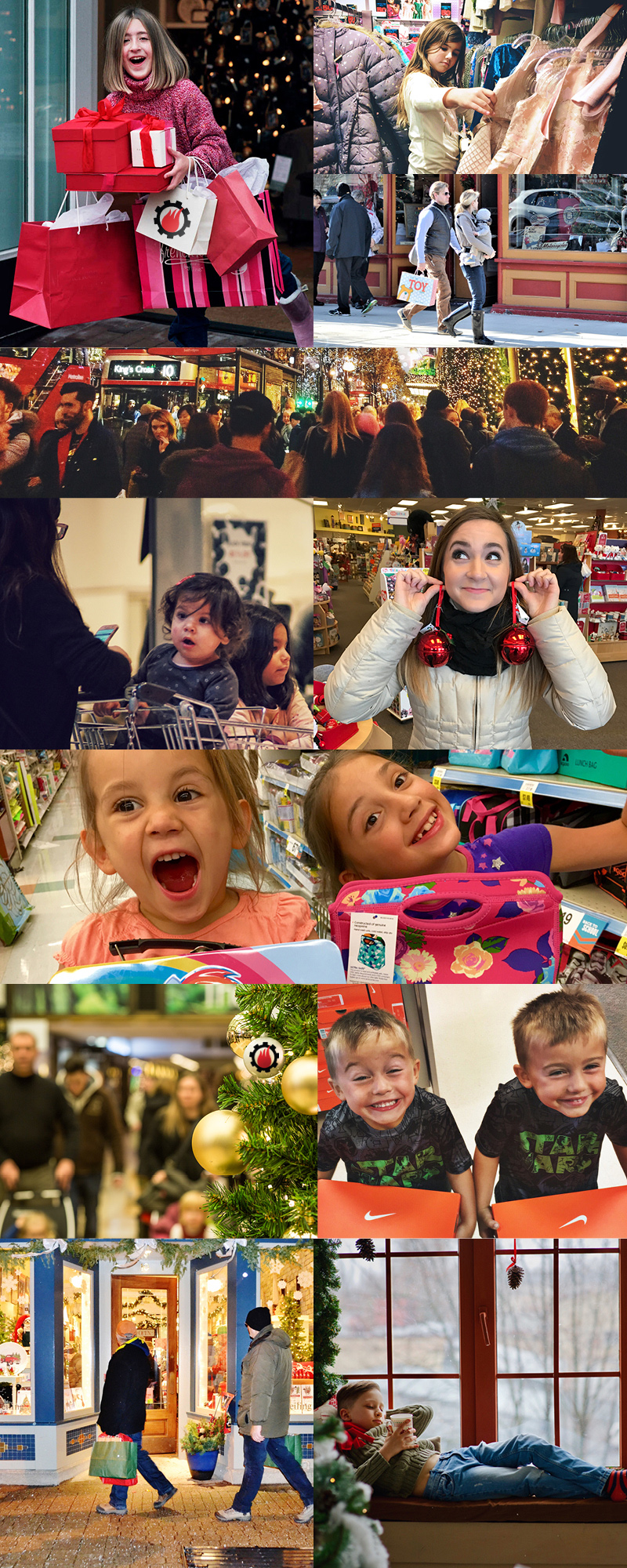

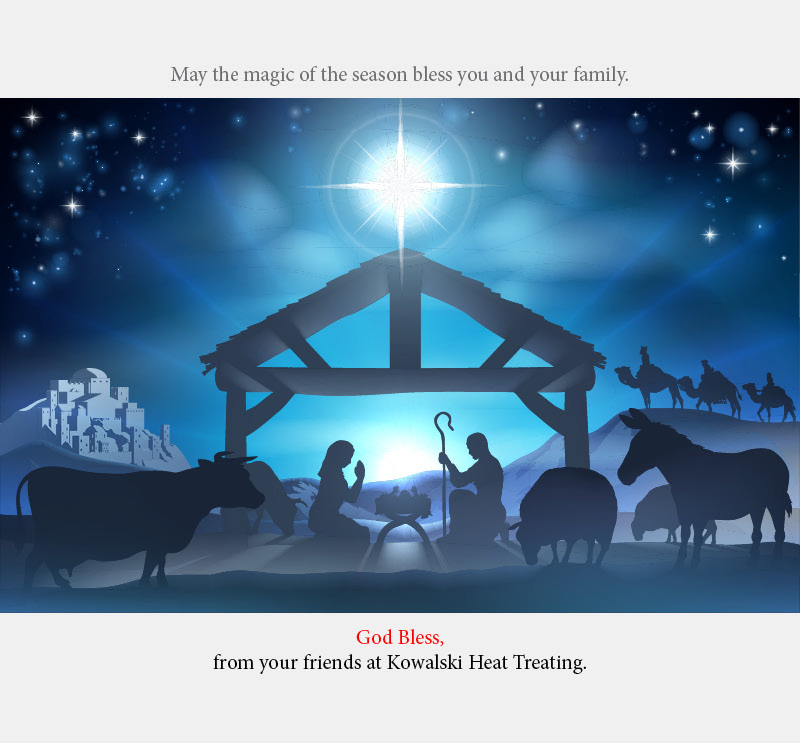
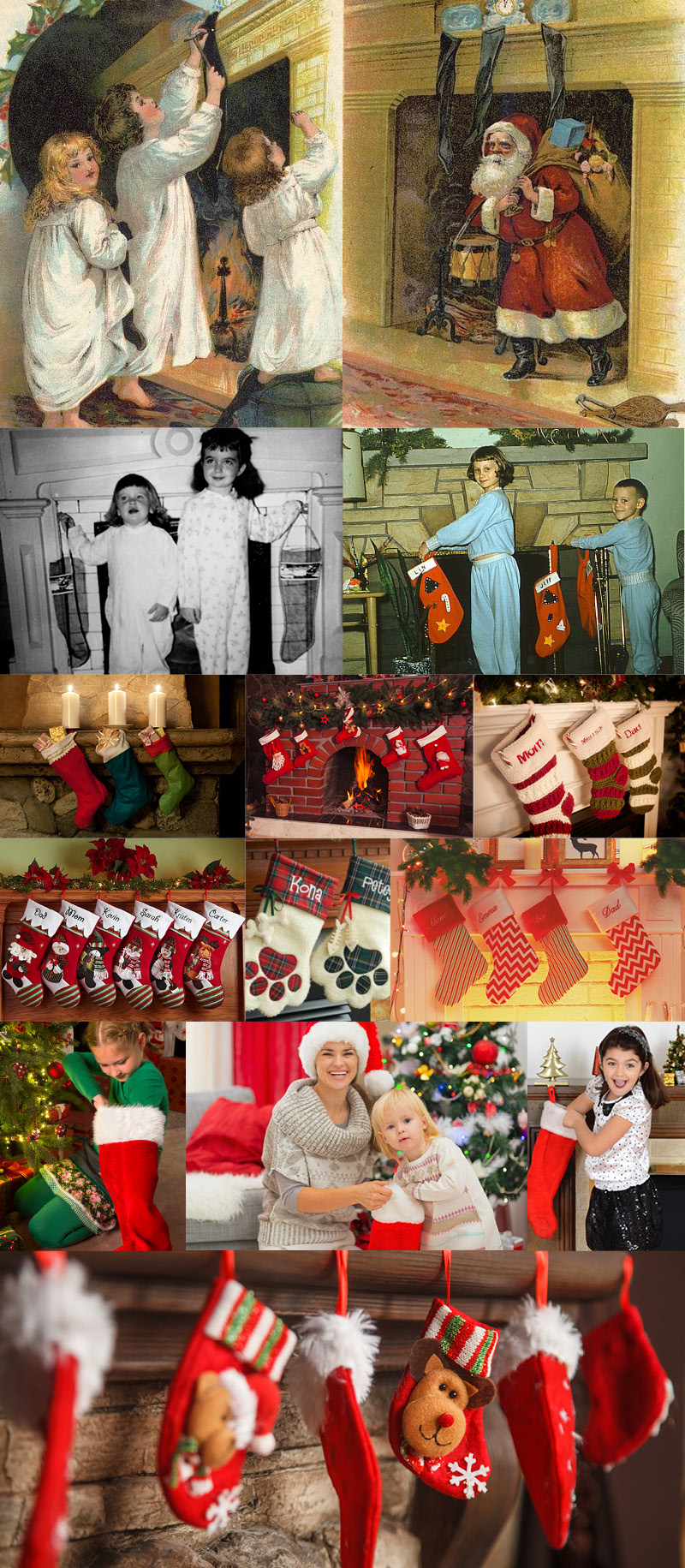
 Decorating the house inside and out is so much fun. Sharing in this season gives me a warm feeling, too. (and I do like warm) So whether you go all out or keep it manageable, be sure to enjoy your family, friends and maybe make a donation to folks & organizations who need our help.
Decorating the house inside and out is so much fun. Sharing in this season gives me a warm feeling, too. (and I do like warm) So whether you go all out or keep it manageable, be sure to enjoy your family, friends and maybe make a donation to folks & organizations who need our help.